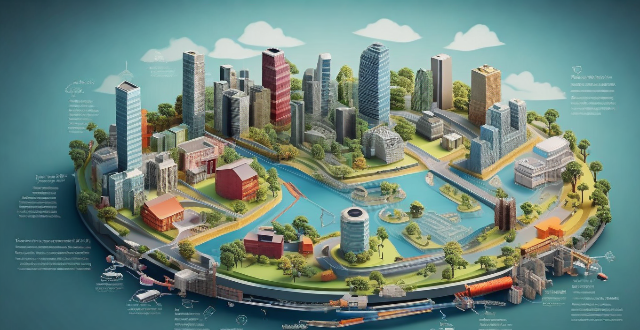The article discusses the challenges and strategies associated with scaling up carbon capture technology (CCT) to mitigate global climate change. The challenges include high costs, technological limitations, infrastructure and logistics issues, and regulatory and legal frameworks. To overcome these challenges, strategies such as policy and economic incentives, technological innovation, infrastructure development, public-private partnerships, and international cooperation are proposed. Scaling up CCT is crucial in reducing atmospheric CO2 levels and combating global climate change.

Scaling Up Carbon Capture Technology for Global Climate Change Mitigation
Introduction
Carbon capture technology (CCT) is a set of methods for capturing waste carbon dioxide (CO2) from industrial processes and power generation before it is released into the atmosphere. This technology is crucial in mitigating global climate change, as CO2 is a potent greenhouse gas contributing significantly to global warming. However, scaling up CCT to make a meaningful impact on climate change presents several challenges that need to be addressed.
Challenges to Scaling Up Carbon Capture Technology
High Costs
- Initial Investment: Building new facilities with CCT requires significant upfront capital.
- Operating Expenses: The energy required to run carbon capture systems can be costly.
Technological Limitations
- Efficiency: Current technologies are not always efficient at capturing CO2.
- Storage Capacity: Safe and long-term storage solutions for captured CO2 are limited.
Infrastructure and Logistics
- Transportation: Moving CO2 from capture sites to storage sites is logistically complex.
- Storage Sites: Suitable geological formations for CO2 storage are not evenly distributed around the world.
Regulatory and Legal Frameworks
- Policies: Lack of supportive policies and incentives can hinder investment in CCT.
- Legal Concerns: Liability issues surrounding CO2 storage have yet to be fully resolved.
Strategies for Scaling Up Carbon Capture Technology
Policy and Economic Incentives
- Government Support: Direct funding, tax credits, and research grants can lower barriers to entry.
- Carbon Pricing: Putting a price on carbon emissions creates economic incentives for companies to invest in CCT.
Technological Innovation
- Research and Development: Investing in R&D can lead to more efficient and cost-effective capture methods.
- Direct Air Capture: Advances in DAC could allow for capturing CO2 directly from the atmosphere.
Infrastructure Development
- Pipeline Networks: Establishing dedicated CO2 pipelines can facilitate transportation.
- Storage Solutions: Expanding geological storage options and exploring new methods like mineralization.
Public-Private Partnerships
- Collaborative Projects: Joint ventures between governments and private sectors can share risks and resources.
- Knowledge Sharing: Encouraging open dialogue and sharing best practices across industries.
International Cooperation
- Global Standards: Developing uniform standards for carbon capture and storage.
- Technology Transfer: Sharing advanced CCT with countries that lack such capabilities.
Conclusion
Scaling up carbon capture technology is essential for combating global climate change, but it requires overcoming significant economic, technical, and logistical barriers. Through a combination of policy support, technological innovation, infrastructure development, public-private partnerships, and international cooperation, it is possible to expand the use of CCT and make a substantial contribution to reducing atmospheric CO2 levels.